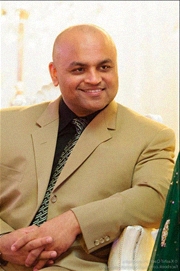Tutor HuntResources Maths Resources
Teaching Philosophy
My teaching methodology
Date : 06/05/2014
Author Information

Uploaded by : Naveed
Uploaded on : 06/05/2014
Subject : Maths
The purpose of a liberal arts education should be to create an environment where people are excited by interesting ideas regardless of whether that idea has immediate application or not. I am a firm believer in that. I work in the field of pure mathematics, and pursue problems that are intellectually challenging and interesting. None of the research topics I have worked on have any immediate application in today's world. I deploy the same philosophy in my teaching. I like to get students excited about mathematics simply because it is interesting.
My methods include introducing topics with specific examples so that a student can identify with the methodology used behind a theorem or a formula. This way, instead of viewing a theorem or a formula as some boring and meaningless inventions, the student views them as natural and logical products of the process of investigation of a particular problem. For example, before introducing the definite integral to a freshman class of calculus at Dartmouth, I divided the students in small groups and drew a curve on the blackboard. I then asked each group to come up with a method to find the area under the curve. They all came up with methods that included approximations with circles, triangles or rectangles. Then, later, when I introduced the idea of the Riemann Sum, the students were very receptive and completely understood why we define definite integrals the way we do.
I also make it a point to make it clear to my students that mathematicians are not people from outer space, but are people just like them: they make mistakes; they struggle with problems; they discuss ideas with others; and sometimes they fail in a particular approach and have to rethink their approach. The idea is to encourage students not to be disheartened by failure and temporary hurdles. They are not the first ones to struggle with some mathematical concepts - all mathematicians struggle from time to time.
I am interested in teaching all types of courses including statistics, calculus, differential equations, linear algebra, analysis, geometry and topology. Also, since I have worked in the field of data warehousing for over twelve years as a consultant, I believe I can also teach courses related to data modeling and data warehousing in the computer science department.
This resource was uploaded by: Naveed
